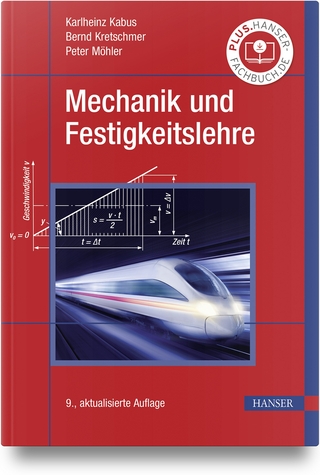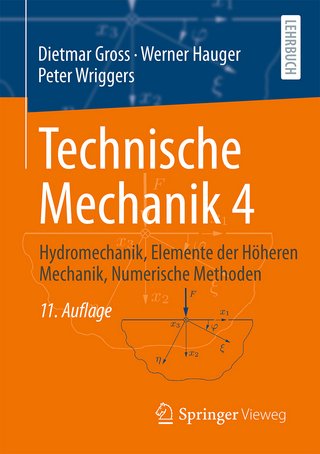
The Technology of Binaural Understanding
Springer International Publishing (Verlag)
978-3-030-00385-2 (ISBN)
Sound, devoid of meaning, would not matter to us. It is the information sound conveys that helps the brain to understand its environment. Sound and its underlying meaning are always associated with time and space. There is no sound without spatial properties, and the brain always organizes this information within a temporal-spatial framework. This book is devoted to understanding the importance of meaning for spatial and related further aspects of hearing, including cross-modal inference.
People, when exposed to acoustic stimuli, do not react directly to what they hear but rather to what they hear means to them.
This semiotic maxim may not always apply, for instance, when the reactions are reflexive. But, where it does apply, it poses a major challenge to the builders of models of the auditory system. Take, for example, an auditory model that is meant to be implemented on a robotic agent for autonomous search-&-rescue actions. Or think of a system that can performjudgments on the sound quality of multimedia-reproduction systems. It becomes immediately clear that such a system needs
- Cognitive capabilities, including substantial inherent knowledge
- The ability to integrate information across different sensory modalities
To realize these functions, the auditory system provides a pair of sensory organs, the two ears, and the means to perform adequate preprocessing of the signals provided by the ears. This is realized in the subcortical parts of the auditory system. In the title of a prior book, the term Binaural Listening is used to indicate a focus on sub-cortical functions. Psychoacoustics and auditory signal processing contribute substantially to this area.
The preprocessed signals are then forwarded to the cortical parts of the auditory system where, among other things, recognition, classification, localization, scene analysis, assignment of meaning, quality assessment, and action planning take place. Also, information from different sensory modalities is integrated at this level. Between sub-cortical and cortical regions of the auditory system, numerous feedback loops exist that ultimately support the high complexity and plasticity of the auditory system.
The current book concentrates on these cognitive functions. Instead of processing signals, processing symbols is now the predominant modeling task. Substantial contributions to the field draw upon the knowledge acquired by cognitive psychology. The keyword Binaural Understanding in the book title characterizes this shift.
Both books, The Technology of Binaural Listening and the current one, have been stimulated and supported by AABBA, an open research group devoted to the development and application of models of binaural hearing. The current book is dedicated to technologies that help explain, facilitate, apply, and support various aspects of binaural understanding. It is organized into five parts, each containing three to six chapters in order to provide a comprehensive overview of this emerging area. Each chapter was thoroughly reviewed by at least two anonymous, external experts.
The first part deals with the psychophysical and physiological effects of Forming and Interpreting Aural Objects as well as the underlying models. The fundamental concepts of reflexive and reflective auditory feedback are introduced. Mechanisms of binaural attention and attention switching are covered-as well as how auditory Gestalt rules facilitate binaural understanding. A general blackboard architecture is introduced as an example of how machines can learn to form and interpret aural objects to simulate human cognitive listening.
The second part, Configuring and Understanding Aural Space, focuses on the human understanding of complex three-dimensional environments-covering the psychological and biological fundamentals of auditory space formation. This part further addresses the human mechani
Jens Peter Blauert (born 20 June 1938 in Hamburg) is a German scientist specializing in psycho-acoustics and an emeritus professor at the Ruhr-Universität Bochum, where he founded the Institute of Communication Acoustics. His major scientific fields of interest are spatial hearing, binaural technology, aural architecture, perceptual quality, speech technology, virtual environments and tele-presence. Jonas Braasch is Associate Professor at the School of Architecture at Rensselaer Polytechnic Institute, where he teaches in the Graduate Program in Architectural Acoustics. His research interests span binaural hearing, auditory modeling, multimodal integration, sensory substitution devices, aural architecture and creative processes in music improvisation. At RPI, he directs the Communication Acoustics and Aural Architecture Research Laboratory (CA^3 RL). He obtained a master's degree from Dortmund University (Germany, 1998) in Physics and two PhD degrees from Ruhr-University Bochum, Germany (2001, 2004) in Electrical Engineering/Information Science and Musicology. His research interests include Binaural Hearing, Multi-channel Audio Technology, Telematic Music Systems, Perceptual Audio/Visual Integration, Intelligent Systems, and Musical Acoustics. For his work, he has received funding from NSF, NSERC, DFG (German Science Foundation), and NYSCA. As a soprano saxophonist and sound artist, he has worked with Curtis Bahn, Chris Chafe, Michael Century, Mark Dresser, Francisco Lopez, Pauline Oliveros, and Doug van Nort - among others. Jonas Braasch is an affiliated faculty member of RPI's Experimental Media and Performing Arts Center (EMPAC) and Board Member of the Deep Listening Institute (Kingston, NY).
Part 1: Forming and Interpreting Aural Objects: Effects and Models.- Part 2: Configuring and Understanding Aural-Space.- Part 3: Processing Cross-modal Inference.- Part 4: Evaluating Aural-scene Quality and Speech Understanding.- Part 5: Applying Cognitive Mechanisms in Audio Technology.
"Thought-provoking, encyclopedic in its literature review, and deeply enjoyable. ... The Technology of Binaural Understanding is a great physical representation of blackboard architecture: numerous experts coming together to contribute their collective experience. ... The Technology of Binaural Understanding will certainly inspire current and future generations of acousticians." (Brandon Cudequest, Journal of the Audio Engineering Society, Vol. 69 (5), 2021)
| Erscheinungsdatum | 17.08.2020 |
|---|---|
| Reihe/Serie | Modern Acoustics and Signal Processing |
| Zusatzinfo | XI, 815 p. 213 illus., 152 illus. in color. |
| Verlagsort | Cham |
| Sprache | englisch |
| Maße | 155 x 235 mm |
| Gewicht | 1400 g |
| Themenwelt | Naturwissenschaften ► Physik / Astronomie ► Mechanik |
| Technik ► Maschinenbau | |
| Schlagworte | Aural Objects • binaural sounds • Binaural speech intelligibility • Dynamic sound-source localization • perceptual space • psychoacoustics |
| ISBN-10 | 3-030-00385-X / 303000385X |
| ISBN-13 | 978-3-030-00385-2 / 9783030003852 |
| Zustand | Neuware |
| Haben Sie eine Frage zum Produkt? |
aus dem Bereich


